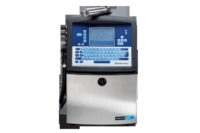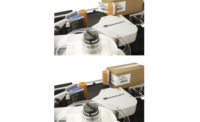New Current Transformer from Beckhoff Increases System Efficiency and Uptime

Machines and systems can increase efficiencies with intelligent differential current measurement via the SCT5564 ring-type current transformer.
SOURCE Beckhoff Automation
With the SCT5564 ring-type current transformer, Beckhoff offers a universal current-sensitive measurement system for AC and DC differential currents in conformance with the EN/IEC 62020-1 standard. Its use in machine monitoring ensures, among other things, increased system availability and minimized maintenance costs through the early detection of insulation faults.
The SCT5564 differential current transformer (type B/B+) can be used as a residual current monitor (RCM) and can measure DC and AC residual currents with up to 100 kHz frequency in the 0 to 2 A range. With its numerous setting options, this RCM offers a flexible platform for differential current measurement and is suitable for a wide range of systems engineering applications. This offers advantages both in the planning phase of an industrial plant and during expansions to include new loads that operate with DC voltages or high switching frequencies and can potentially increase the leakage current in the overall system.
Furthermore, early detection of insulation faults using the SCT5564 helps engineers implement predictive maintenance, thus increasing system availability. In addition, unwanted tripping of the residual current circuit breaker due to diminishing machine insulation is avoided, and the expense of (repeated) insulation tests in accordance with DGUV v3/VDE 0100 is replaced by efficient, permanent residual current measurement.
The SCT5564 differential current transformer has an analog 4...20 mA output that represents the real-time RMS value (TRMS) of the measured differential current. In addition, a potential-free relay output (NO/NC) with freely selectable residual current can be used for warning purposes or even system shutdown if the TRMS residual current measured value exceeds the preset value. A test button and an external test button input support periodic testing of the RCM in accordance with applicable product standards.
Crucial advantages and added value with PC-based control
Fault currents can also occur during normal operation, e.g. due to the magnetizing of an electric motor during startup. In such cases, the seamless integration of the current transformer into PC-based control technology from Beckhoff creates special application advantages. In the example mentioned, the information available in the control system regarding the startup of a motor can reliably exclude false tripping.
This important capability is particularly relevant for machines with multiple motors or actuators since an increasing residual current and thus a probable insulation fault can be assigned directly to the corresponding component without having to measure the differential current of each individual drive. The same applies, for example, to the monitoring of heating elements in plastics machines, where early replacement can prevent insulation loss due to aging in an efficient and cost-effective manner. Here, just one central measurement device and its corresponding control data make this possible.
Looking for a reprint of this article?
From high-res PDFs to custom plaques, order your copy today!






